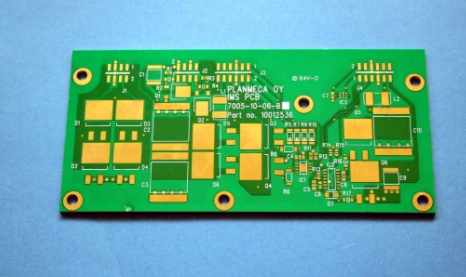Moisture is the most common and destructive main factor for circuit boards. Excessive moisture will greatly reduce the insulation resistance between conductors, accelerate high-speed decomposition, reduce the Q value, and corrode the conductors. We often see the patina on the metal part of the circuit board.

Coating the three-proof paint on the printed circuit board and components can reduce or eliminate the performance degradation of electronic products when it may be affected by adverse factors in the operating environment. If this three-proof paint can maintain its effect for a satisfactory period of time, such as longer than the product's service life, it can be deemed to have achieved its coating purpose.
Three anti-paint diagram of circuit board
Three anti-paint diagram of circuit board
Three anti-paint composition
Acrylic products
Acrylic tri-proof paint is flexible and can provide comprehensive protection. Because it is a one-component system, it has good adhesion, simple operation, low requirements on equipment and conditions, convenient construction, high transparency, high brightness, and short operation cycle. Therefore, they are easy to use and easy to remove. Some acrylic products meet military standards. They dry quickly without drying, and can be removed with matching organic solvents. Therefore, this type of circuit board tri-proof paint is one of the most versatile and effective products on the market.
Is the three anti-paint toxic
Whether the three-proof paint is toxic depends on the type of three-proof paint thinner and solvent used. If the three-proof paint uses toluene or xylene as the thinner, this chemical is harmful to the human body. If the use of lipids, alcohols, etc. small. Xylene is moderately toxic, irritating to the eyes and upper respiratory tract, and at high concentrations, it has anesthetic effect on the central system.
Although there are many environmentally friendly three-proof paints on the market now, in actual use, we still need to take protective measures and wear gas masks when using them.
There are four following three anti-coating processes:
1. Brushing-universal use, can produce excellent coating effects on smooth surfaces.
2. Spraying-the use of spray cans can be easily applied to maintenance and small-scale production. The spray gun is suitable for large-scale production, but these two spraying methods require high accuracy of operation and may produce Shadow (the place where the lower part of the component is not covered with three anti-paint).
3. Automatic dip coating-dip coating can ensure complete film coating, and will not cause material waste due to overspray.
4. Selective coating film-coating is accurate and does not waste materials, suitable for large batches of film, but requires higher coating equipment. Most suitable for large-volume laminating. Using a set XYZ program can reduce the masking. When painting the circuit board, there are many connectors that do not need to be painted. Adhesive paper is too slow and there is too much glue remaining when it is torn. Consider making a combined cover according to the shape, size, and position of the connector, and use the mounting hole to locate it. Cover the parts not to be painted.
Three anti-paint operation process requirements
1. Clean and bake the board to remove moisture and moisture. The dust, moisture and oil on the surface of the object to be coated must be removed first, so that it can give full play to its protective effect. Thorough cleaning can ensure that the corrosive residues are completely removed, and make the three-proof paint adhere to the surface of the circuit board well. Drying conditions: 60°C, 10-20 minutes, take it out of the oven and apply it while it is hot for better effect;
2. Apply by brushing method, the brushing area should be larger than the area occupied by the device to ensure that the device and the pad are fully covered;
3. When brushing, the board should be placed as flat as possible, there should be no dripping after brushing, and the brushing should be smooth and no exposed parts, preferably between 0.1-0.3mm.
4. Before brushing and spraying, ensure that the diluted PCB product is fully stirred, and leave it for 2 hours before brushing or spraying. Use a high-quality natural fiber brush and lightly brush and dip at room temperature. If machinery is used, the viscosity of the paint should be measured (with a viscosity agent or a flow cup), and a thinner can be used to adjust the viscosity.
What is the use of the three-proof paint of the circuit board
5. The circuit board components should be immersed vertically in the paint tank. The connector should not be immersed, unless it is carefully covered, the circuit board should be immersed for 1 minute until the bubbles disappear, and then slowly take it out. A uniform film will be formed on the surface of the circuit board. Most of the paint residue should be allowed to flow from the circuit board back to the dipping machine. TFCF has different coating requirements. The immersion speed of the circuit board or components should not be too fast to avoid excessive bubbles.
6. When using it again after dipping, if there is skinning on the surface, remove the skin and continue using it.
7. After brushing, it is placed flat on the support and ready to be cured. The method of heating is to accelerate the curing of the coating. If the surface of the coating is uneven or contains bubbles, it should be placed in a high-temperature oven for more time to be cured at room temperature to allow the solvent to flash out.